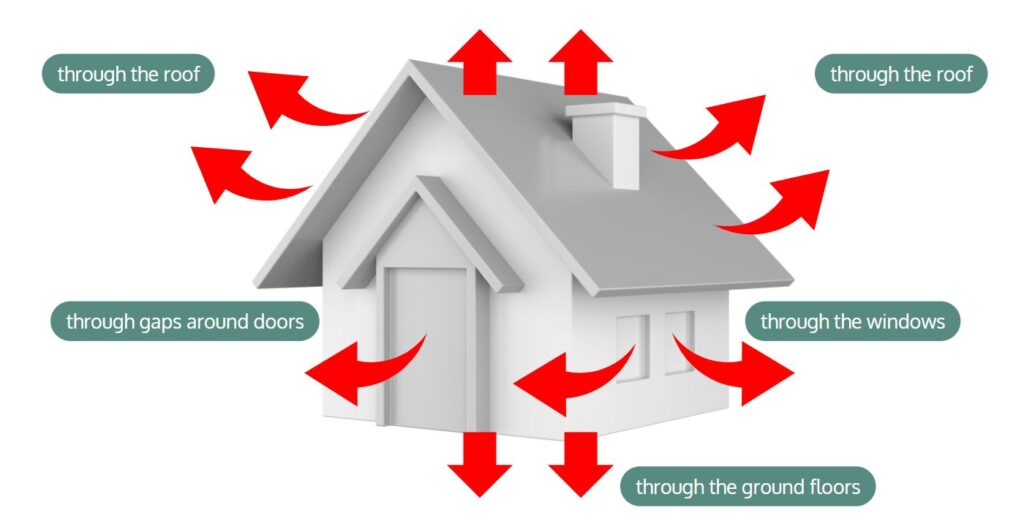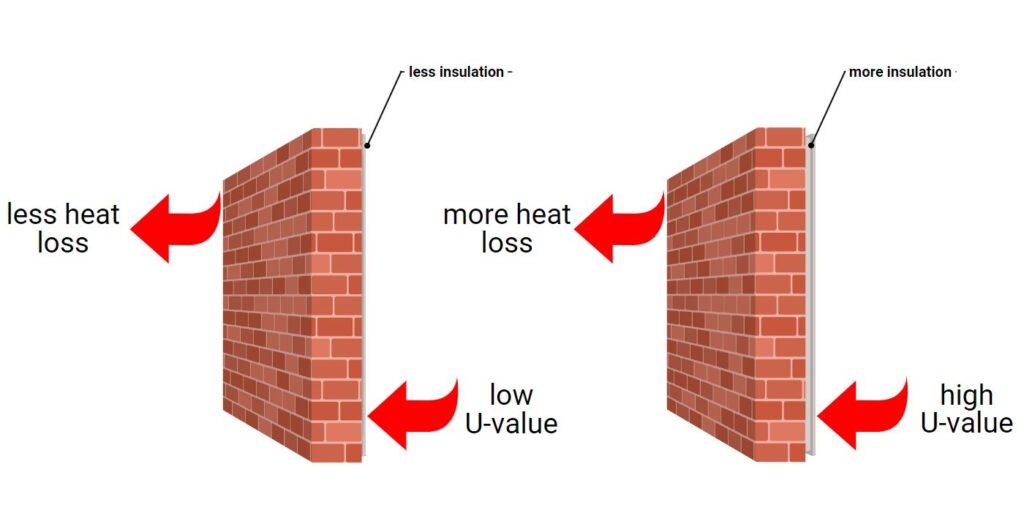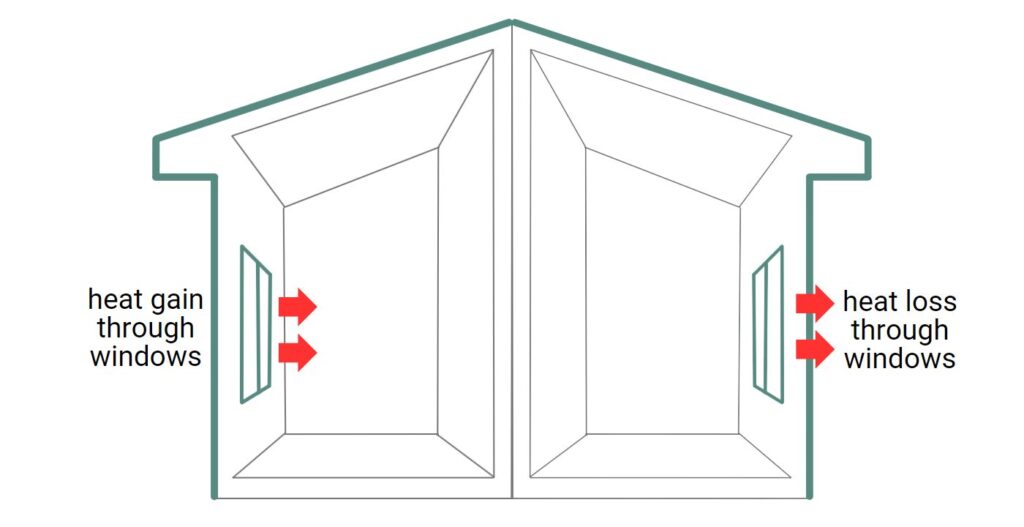- Sign-In
- Sign-Up

Heat loss is defined as the amount of heat that transfers through the materials of a building from within the structure to outside it. It doesn’t matter if the heat loss occurs due to convection, conduction or radiation.
In some cases, heat loss occurs due to the combination of all of those movements.
Heat loss is measured in kilowatts or British Thermal Units depending on your location. This number generally represents how much energy it takes in order to keep a space heated to the desired temperature on the coldest possible day.

While heat loss itself is measured in kilowatts or British Thermal Units, and the exact heat loss measurement is used in order to determine the overall heat transfer rate, which is measured as U values. Both homeowners and contractors will consider the U value of a space in order to determine the best way to heat it as efficiently and effectively as possible.
For example, if you have a room in your home with a high U value, you may want to consider measures to reduce the amount of heat loss in your home. A room with a low U value is generally considered to be well-insulated and well-protected against heat loss.
Heat losses and U values are calculated using a variety of factors, including:
Heat losses and heat transfers will play a significant role in the effectiveness of your heating solution. It is essential to understand the impact of heat loss when you are investing in a new heating system, such as underfloor heating, because the amount of heat loss will determine whether that solution will be effective or not.
These are just a few of the reasons why you should identify where heat loss is occurring and determine the U value rate of a given space before you invest in an underfloor heating system for your home:
On the surface, heat loss may seem like a minor measurement that can easily be overlooked, but it plays a pivotal role in the long-term success of your heating system.
Fortunately, there are many ways that you can work to reduce heat loss in a space and still invest in the heating solution that you prefer. If you are looking to install radiant flooring in your home, you can reduce heat loss and increase the effectiveness of your new system by:
For example, if you are planning to install heated floors in your bathroom, you can seal areas where air typically escapes, such as around windows or even along the door frame.
In the event that you are having heated floors installed in a garage, you may want to invest in additional insulation first. This insulation will reduce heat loss in the garage, which may have a relatively high U value. By adding extra insulation, your new heated flooring system will be more effective.
The heat loss in any given room can be further reduced when you opt for an energy-efficient heating solution, such as radiant flooring. When a heating system works quickly and efficiently to heat a space — and that space is well-insulated and protected — your heat transfer rate will drop significantly. Ultimately, working to reduce the heat losses in your home combined with choosing an energy-efficient heating solution will lower your heating costs in the long term.

Heat loss and heat gain are important concepts in thermal dynamics. Heat loss occurs when heat transfers from a warmer area to a cooler one due to factors like poor insulation, leading to decreased indoor temperature and higher energy consumption. On the other hand, heat gain happens when heat is absorbed or accumulated, often from external sources like sunlight or inefficient cooling systems, resulting in discomfort and increased energy usage for cooling.

When installed in a room with a low U value and where few heat losses occur, radiant flooring can be an effective heating solution that makes your space as comfortable as possible.
There are several considerations that you need to keep in mind when considering radiant flooring as a way to reduce heat loss in a room:
Naturally, radiant flooring will be able to more thoroughly heat a space that is smaller and that has proper insulation. In larger rooms or more open spaces, radiant flooring can be used to heat the area, but you may also need to consider supplemental heating solutions.
Fortunately, underfloor heating is a flexible and versatile option that can be installed under a variety of floor materials. However, some materials hold heat better than others. Natural wood floors, for example, are an ideal material to use when you are having underfloor heating installed along with new flooring.
You should talk with your radiant flooring contractor to determine if your personal preferences for air temperature work well with the output of their underfloor heating system.
At Green Wave Distribution, we offer a safe, low-voltage underfloor heating system that is powerful, reliable and efficient, and it can effectively heat most spaces, including residential rooms, garages, sheds and more.
Radiant flooring is an ideal option if you are looking to reduce heat losses in your home. Underfloor heating is more than just a luxurious enhancement that makes you feel more comfortable in a particular room — it’s a heating system that can work to bring the room to its desired temperature. It is one of the most sustainable ways to heat a space or a structure, given the fact that it relies on electricity and is created from recycled materials.
Green Wave Distribution can provide you with expert information about how this heating system can reduce heat loss in your home. Contact us today for more information about the benefits of radiant flooring.
